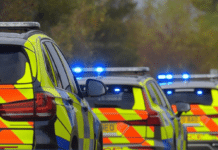In December 2017, Dorset’s Police & Crime Commissioner launched a public consultation seeking residents’ views on lowering the drink drive limit. There is just one week left to have your say before the consultation closes.
While Scotland saw its drink drive limit lowered in December 2014 to 50 milligrams per 100ml of blood, the 80 milligram limit set in the 1967 Road Safety Act remains in place in England and Wales.
PCC Martyn Underhill said: “The law should give drivers conclusive guidance. The problem with having the most generous legal drink drive threshold in Europe is that it encourages motorists to “have a few” and “chance it”.
“It’s a fact that any blood alcohol content affects the way that you drive. Be it through lack of attention, speed of reaction or just increased bravado, permitting drinking before driving creates risk and we should not underestimate the impact that the current limit has on road safety.”
In 2016, alcohol was recorded as a contributory factor in 26 collisions in Dorset. Of these, at least 4 serious injury collisions involved motorists who had alcohol present in their blood, but at a level below the current legal limit.
Limitations with data recording may mean that in reality, the number of collisions involving drivers impaired by alcohol is far higher. For example, samples are not taken when individuals are too badly injured at the time of a collision, and under Home Office rules, police are only required to record results when motorists fail a roadside breath test.
Sir Peter North carried out a ‘Review of Drink and Drug Driving Law’ in 2010 and made a recommendation for a reduction to a 50mg legal limit. The review concluded:
‘Research consistently demonstrates that the risk of having an accident increases exponentially as more alcohol is consumed. Drivers with a blood alcohol concentration (BAC) of between 20mg per 100ml and 50 mg/100 ml have at least a three times greater risk of dying in a vehicle crash than those drivers who have no alcohol in their blood. This risk increases to at least six times with a BAC between 50 mg/100 ml and 80 mg/100 ml, and to 11 times with a BAC between 80 mg/100 ml and 100 mg/100 ml.’
Department for Transport figures recently showed that alcohol-related collisions resulted in 9,050 casualties in 2016, up by 7 per cent in 12 months.
The PCC continued: “I am convinced that a lower limit where one drink could cost you your licence sends a clearer message. With fatalities and injuries on the rise and traffic officer numbers in decline due to police funding cuts, we need drink drive legislation to more effectively deter motorists from drinking at all before getting behind the wheel.”
The Commissioner intends to continue to lobby Government to rethink this issue and will place the views of local people are at the forefront of discussions.
TAKE PART IN THE DRINK DRIVE LIMIT CONSULTATION











